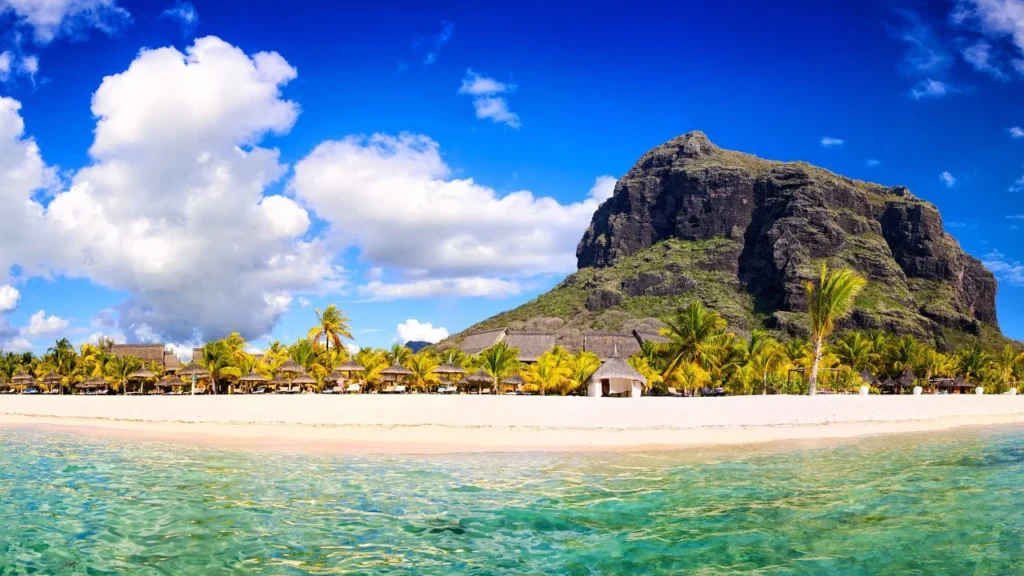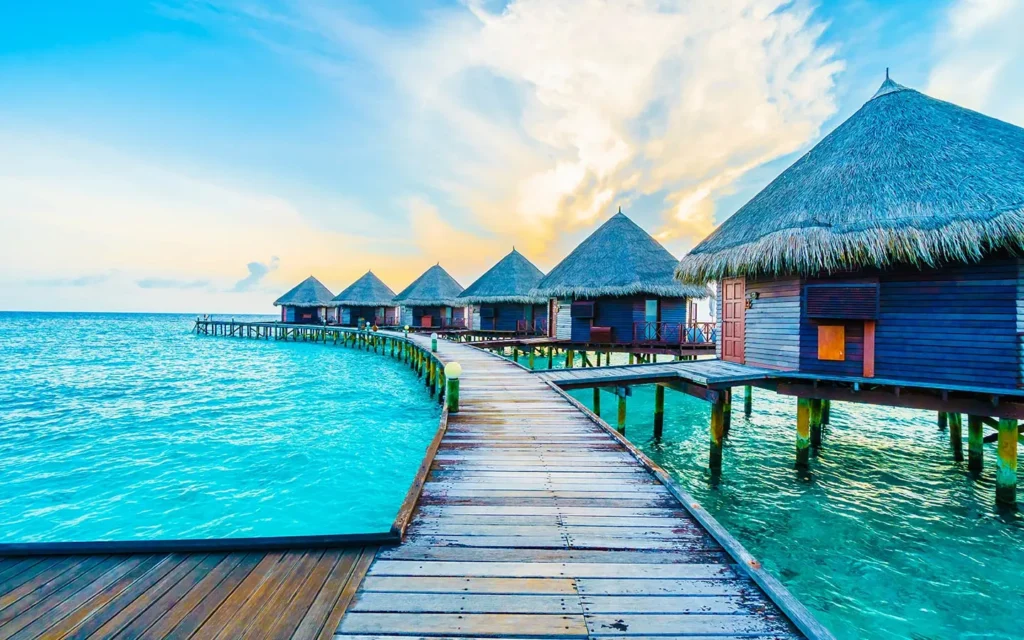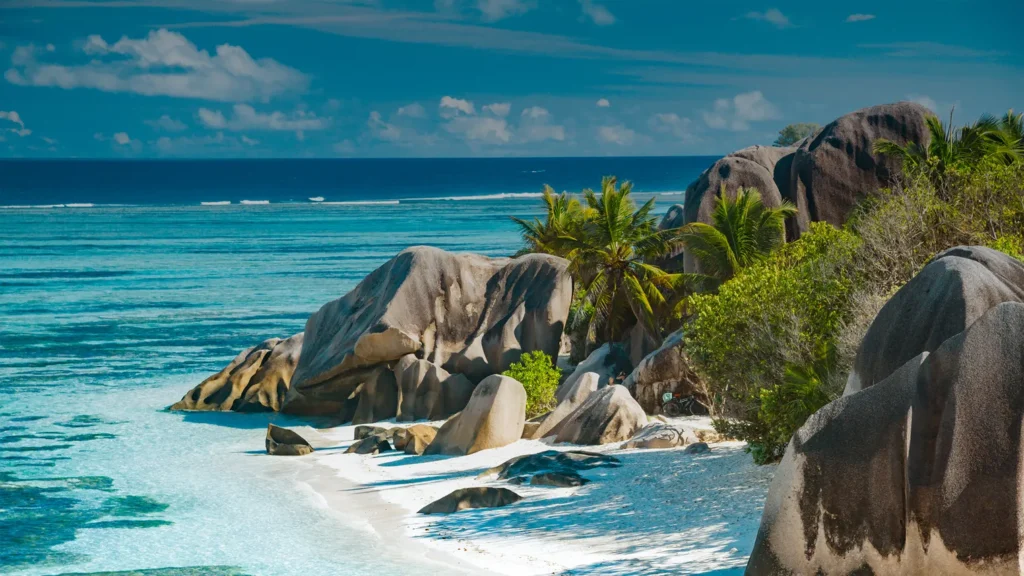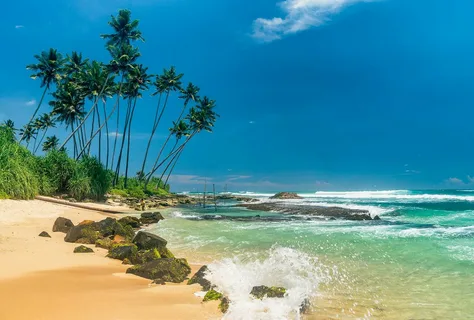The Indian Ocean, bordered by Asia, Africa, Australia, and Antarctica, is home to some of the most breathtaking islands on the planet. From pristine beaches and turquoise waters to lush landscapes and vibrant cultures, the islands of the Indian Ocean are a dream destination for travelers. Whether you’re planning a romantic honeymoon, an adventurous getaway, or a relaxing retreat, these islands offer something for everyone. In this article, we’ll explore the best islands in the Indian Ocean that you absolutely must visit.
Why the Indian Ocean Islands Are a Must-Visit
The Indian Ocean is a treasure trove of natural beauty, cultural richness, and unforgettable experiences. Its islands are renowned for their stunning beaches, diverse marine life, and unique ecosystems. Whether you’re a nature enthusiast, a history buff, or simply looking to unwind, the best islands in the Indian Ocean promise an unforgettable journey.
1. Mauritius: The Gem of the Indian Ocean

Mauritius, nestled in the heart of the Indian Ocean, is a tropical paradise that captivates travelers with its stunning beaches, lush landscapes, and vibrant culture. Known for its turquoise waters, white sandy beaches, and volcanic mountain backdrops, this island is a dream destination for honeymooners, adventurers, and families alike. But Mauritius is more than just a pretty postcard—it’s a place where history, culture, and natural beauty come together to create an unforgettable experience.
A Tropical Paradise for Every Traveler
Mauritius is a destination that caters to all kinds of travelers. Whether you’re seeking relaxation on pristine beaches, thrilling water sports, or immersive cultural experiences, this island has it all. The island’s diverse landscapes—from its coral-fringed lagoons to its rugged mountain peaks—offer endless opportunities for exploration and adventure.
Rich Cultural Heritage
Mauritius is a melting pot of cultures, shaped by centuries of migration and colonization. The island’s population is a blend of Indian, African, Chinese, and European influences, reflected in its architecture, cuisine, and festivals. Don’t miss the chance to visit the vibrant markets of Port Louis, where you can sample local delicacies like dholl puri and gateaux piment, or explore the island’s colonial-era landmarks, such as the Château de Labourdonnais.
Natural Wonders and Outdoor Adventures
For nature lovers, Mauritius is a treasure trove of natural wonders. Hike through the lush Black River Gorges National Park, home to rare bird species and breathtaking waterfalls, or take a boat trip to Île aux Cerfs, a small island known for its pristine beaches and crystal-clear waters. Adventure seekers can try their hand at kite surfing, zip-lining, or even swimming with dolphins in the wild.
Luxury Resorts and World-Class Hospitality
Mauritius is renowned for its luxury resorts, many of which are nestled along the island’s stunning coastline. From overwater bungalows to beachfront villas, these resorts offer the perfect blend of comfort and elegance. Indulge in spa treatments, savor gourmet cuisine, or simply relax by the pool with a cocktail in hand—Mauritius is the ultimate destination for a luxurious escape.
A Culinary Journey
Mauritian cuisine is a reflection of the island’s multicultural heritage. From Creole curries to Chinese noodles and French pastries, the food here is as diverse as its people. Be sure to try the island’s signature dish, seafood vindaye, and pair it with a refreshing glass of locally brewed Phoenix beer.
Sustainable Tourism in Mauritius
As tourism continues to grow, Mauritius is committed to preserving its natural beauty and cultural heritage. Many resorts and tour operators are adopting eco-friendly practices, such as reducing plastic waste and supporting local communities. By choosing sustainable travel options, visitors can help protect this island paradise for future generations.
Maldives: Conquering Paradise in the Indian Ocean

The Maldives, a jewel in the heart of the Indian Ocean, is more than just a tropical paradise—it’s a destination steeped in history, culture, and natural wonder. With over 1,200 islands scattered across 26 atolls, this archipelago has captivated travelers for centuries. From its ancient Buddhist roots to its Islamic heritage and colonial influences, the Maldives is a tapestry of diverse cultures and traditions. Today, it stands as one of the world’s most sought-after destinations, offering unparalleled luxury, breathtaking marine life, and a chance to reconnect with nature.
A Rich and Varied History
The Maldives’ history dates back over 2,500 years, with evidence of settlements as early as 500 BCE. The islands were likely first inhabited by seafarers from South India and Sri Lanka, who brought with them Buddhist traditions. Remnants of this era, such as ancient stupas, can still be found on some islands. Over time, the Maldives became a strategic hub along ancient maritime trade routes, attracting Arab, Persian, and European traders. By the 12th century, Islam had taken root, shaping the islands’ culture, politics, and identity. The sultans, who ruled for centuries, left an indelible mark on the nation’s history.
Colonial Struggles and Independence
The Maldives’ strategic location also made it a target for colonial powers. In the 16th century, the Portuguese briefly occupied the islands before being driven out by the legendary Maldivian hero, Muhammad Thakurufaanu. Later, the British established a protectorate over the Maldives in the 19th century, though the sultans retained some autonomy. It wasn’t until 1965 that the Maldives gained full independence, and in 1968, the nation transitioned to a republic. Since then, the Maldives has navigated political challenges while emerging as a global tourism hotspot.
A Paradise Under Threat
The Maldives’ natural beauty is its greatest asset—and its greatest vulnerability. Rising sea levels and climate change pose existential threats to these low-lying islands. Yet, the Maldives remains a beacon of resilience, with ongoing efforts to protect its coral reefs, marine ecosystems, and unique way of life. For travelers, this makes a visit to the Maldives not just a vacation, but a chance to witness a fragile paradise that must be cherished and preserved.
Must-Visit Attractions in the Maldives
The Maldives is synonymous with luxury, offering private island resorts, overwater villas, and world-class spas. But beyond the opulence lies a world of natural wonders and cultural treasures. Malé, the bustling capital, is home to historic sites like the Hukuru Miskiy Mosque and the National Museum, which showcases the islands’ rich heritage. For underwater enthusiasts, the Maldives is a diver’s paradise. Sites like Banana Reef and Maaya Thila teem with vibrant coral formations, manta rays, and even whale sharks. And for those seeking solitude, uninhabited islands like Dhigurah offer pristine beaches and a chance to reconnect with nature.
When to Visit the Maldives
The best time to visit the Maldives depends on your preferences. The dry season (December to April) offers sunny skies, calm seas, and ideal conditions for diving and snorkeling. This is also the peak tourist season, so expect higher prices and more crowds. The monsoon season (May to November) brings occasional rain and rougher seas, but it’s also a time when marine life, including manta rays and whale sharks, is most active. Plus, you’ll find fewer tourists and better deals on accommodations.
Reunion Island: The Wild Paradise of the Indian Ocean

Reunion Island located east of Madagascar, is a stunning French island known for its active volcano, Piton de la Fournaise, diverse wildlife, and breathtaking landscapes. Whether you’re an adventurer, a nature lover, or someone who enjoys relaxation, Réunion has something for everyone. What makes this island unique compared to its neighbors in the Indian Ocean is its rugged beauty, with steep cliffs, active volcanoes, and dense jungles. This volcanic island is a paradise for hikers, nature enthusiasts, and anyone seeking an escape into the wild.
To find the perfect place to stay during your trip, check out this collection of top hotels and resorts in theReunion Island. From luxurious beachfront resorts to charming retreats, there’s something for every budget and taste.
Must-Visit Attractions in Réunion
- Piton de la Fournaise: One of the world’s most active volcanoes, it offers hiking opportunities and stunning views of the crater and surrounding landscapes.
- Cirque de Mafate: Accessible only by foot or helicopter, this natural amphitheater offers dramatic views, cascading waterfalls, and a sense of isolation.
- La Plage de l’Hermitage: A perfect spot for swimming with its calm waters and a long stretch of sandy beach.
Best Time to Visit Réunion
- April to November: The island experiences mild weather, making it perfect for hiking, exploring, and beach activities.
Eychelles: A Dream Archipelago in the Indian Ocean

Seychelles is an archipelago of 115 islands, located 1,500 km east of Africa and northeast of Madagascar. This tropical paradise is famous for its white-sand beaches, crystal-clear waters, and diverse marine life. Seychelles is not just about beaches—it offers a rich cultural experience and fantastic local crafts. The archipelago’s rich biodiversity, including unique species of plants and animals, makes it a must-visit for nature lovers.
For a truly unforgettable stay, we recommend booking your accommodation, check out this collection of Best hotels and resorts in Seychelles. From luxurious beachfront resorts to charming retreats, there’s something for every budget and taste.
Must-Visit Attractions in Seychelles
- Anse Source d’Argent: One of the most photographed beaches in the world, known for its granite boulders, turquoise water, and soft sand.
- Vallee de Mai: A UNESCO World Heritage site, this nature reserve is home to the rare Coco de Mer palm and other endemic species.
- Aride Island Nature Reserve: A haven for birdwatchers, this island is home to thousands of seabirds.
Best Time to Visit Seychelles
- April, May, October, and November: These months offer the best weather with minimal rainfall, ideal for beach activities and exploring nature.
Sri Lanka: The Jewel of the Indian Ocean

Sri Lanka is a small island nation in the Indian Ocean, offering over 1,300 km of stunning coastline, abundant wildlife, and rich cultural heritage. Whether you’re into wildlife safaris, beach vacations, or cultural exploration, Sri Lanka has it all. With nine national parks and six nature reserves, the island is perfect for adventurers seeking a true escape into nature.
No matter where you choose to stay in Sri Lanka, you’ll find plenty of options, from elegant beachfront resorts to peaceful hilltop retreats. Browse a wide selection of hotels and resorts in Sri Lanka to find the perfect spot for your getaway.
Must-Visit Attractions in Sri Lanka
- Yala National Park: Famous for its leopards, Yala is one of Sri Lanka’s largest and most visited national parks.
- Sigiriya Rock Fortress: A UNESCO World Heritage site, this ancient rock fortress offers panoramic views and a glimpse into Sri Lanka’s history.
- Galle Fort: A historical colonial fort built by the Portuguese, offering a mix of history, culture, and stunning sea views.
Best Time to Visit Sri Lanka
- December to March: The dry season on the west and south coasts is perfect for beach activities and sightseeing.
Conclusion
The Indian Ocean is home to some of the most breathtaking islands in the world. From the volcanic landscapes of Réunion to the crystal-clear waters of Seychelles and the cultural richness of Sri Lanka, each destination offers something unique. Whether you seek adventure, relaxation, or cultural exploration, these islands are a paradise waiting to be discovered.
The best islands in the Indian Ocean offer a perfect blend of natural beauty, cultural richness, and unforgettable experiences. Whether you’re drawn to the luxury of the Maldives, the adventure of Réunion Island, or the cultural heritage of Sri Lanka, these destinations promise to leave you spellbound. Start planning your trip today and discover why the Indian Ocean is a true paradise on Earth.
FAQs About the Best Islands in the Indian Ocean
1. What is the best time to visit the Indian Ocean islands?
The best time to visit is during the dry season, which varies by island. For example, the Maldives and Seychelles are best visited between November and April, while Mauritius and Réunion are ideal from May to December.
2. Are the Indian Ocean islands expensive to visit?
While some islands like the Maldives and Seychelles are known for luxury and can be expensive, others like Sri Lanka and Réunion offer budget-friendly options.
3. Which island is best for honeymooners?
The Maldives and Mauritius are top choices for honeymooners due to their romantic settings and luxury resorts.
4. What activities can I do on these islands?
Activities range from snorkeling, diving, and hiking to exploring cultural landmarks and enjoying local cuisine.
5. Are the Indian Ocean islands safe for tourists?
Yes, these islands are generally safe for tourists. However, it’s always advisable to follow local guidelines and take standard safety precautions.

